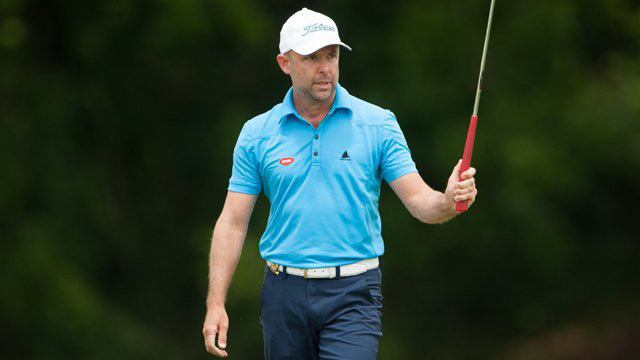NEWS
Escape from the rough with these tips from PGA Professional Rob Labritz

One of the most noteworthy features of U.S. Open venues is the unforgiving rough. You know what we’re taking about – that thick, gnarly stuff.
With the U.S. Open at Oakmont right around the corner, we figured: What better time than now to discuss what you should be thinking about and doing if you find yourself in the rough?
We enlisted PGA Professional Rob Labritz, who has won his fair share of tournaments and has participated in major championships. He's someone who knows a thing or two about what it takes to not let a detour into the rough derail your scorecard.
“Here in the northeast, you’re running into that really thick, nasty rough this time of year,” he said. “It’s the same stuff they’ll see at Oakmont. Luckily, there are a few things you can do to make it not so nasty. And it starts with this: Don’t freak out.”
That sounds like simple advice, but think back for a second to what you were feeling the last time you arrived at a tee shot that went slightly off line to find it gobbled up by grass. What you do next – if not well thought out – can be a round killer.
“The key,” Labritz said, “is to make sure that you’re in control of your club as you swing through that rough. When you’re swinging the club in that thick stuff the grass is going to naturally grab and close your clubface. This is particularly dangerous around the greens. If you’re trying to hit a delicate shot and then have too much follow through, chances are your club-speed will be the same as the ball-speed, a recipe for disaster, that can lead to a double-hit.”
So how do you prevent that from happening and limit the clubface from closing?
“If you’re a right-handed player, focus on the last three fingers of your left hand on the grip (opposite for lefties),” Labritz said. “Grip the club tightly with those fingers. This will help you to stop the club from over-closing. Also, minimize your follow-through so you don’t have to worry about that double-hit I already mentioned. The goal is to have enough speed to get through the grass, but also be in control of the head on the follow through so you don’t hit the ball twice.”
Backing up and getting further away from the green with mid and longer irons, Labritz said there’s a temptation for people to think they need to use their hands a lot more. That, however, won’t do you any good.
Neglecting to employ that rotation from the hips and shoulders like you would on a swing from the fairway will only slow down your swing speed. Decelerating into the golf ball from the rough is going to lead to duffed shots, Labritz said.
RELATED: Advice for breaking 100 | Advice for breaking 90 | Advice for breaking 80
You can remedy that by preparing for the situation you’re about to face. Basically, access your situation.
“Make practice swings in the rough,” Labritz said. “You’re feeling how tall the grass is and where the ground actually starts. When you make those swings, bottom the club out in the right spot. You’ll feel how much the clubhead is being stopped by the grass. That will give you an idea of what club you can hit. It’ll tell you you can’t hit something that doesn’t have much loft. The grass will grab the ball quickly as it is elevating and depending on how tall the grass is, it might not get airborne. You need to elevate the ball quickly with ball speed to leave the 'grab' or stickiness of the grass.”
Part of the decision making that goes into selecting the right club to hit is also having a grasp of what the ball will do when you hit the shot.
“Generally, the ball will come out with no spin because of all the grass between the ball and the face,” Labritz said. “Because of that, the ball is going to ‘run out’ once it lands. You need to think about that. You don’t want it to come out too hot and run through the fairway or the green.”
As with everything when it comes to keeping a tidy scorecard and minimizing the damage, it’s all about positioning.
“The priority on any shot from the rough is always to get back in position for the next shot since you’re already out of position,” Labritz said. “Remember, around the greens, minimize the follow through – but not on the full shot. Find out where that club is bottoming out on those practice swings. Find out where that ball is sitting. The lower it is, the tighter the grip. Don’t go to extremes.”
